Aleix Roig
Although his name has now been forgotten, Antoni Casanova Estorach was one of the most successful Catalan artists in Paris in the last quarter of the nineteenth century. His technical excellence was admired in Europe and the USA, and he won the acknowledgement of critics and public alike. Although he successfully and solidly developed different genres, it was thanks to his scenes of anticlerical satire that he scaled the heights of success. Apart from his undeniable skill, hidden under an affable veil in this kind of production is the artistic testimony of one of the most caustic and irreverent painters of his day.
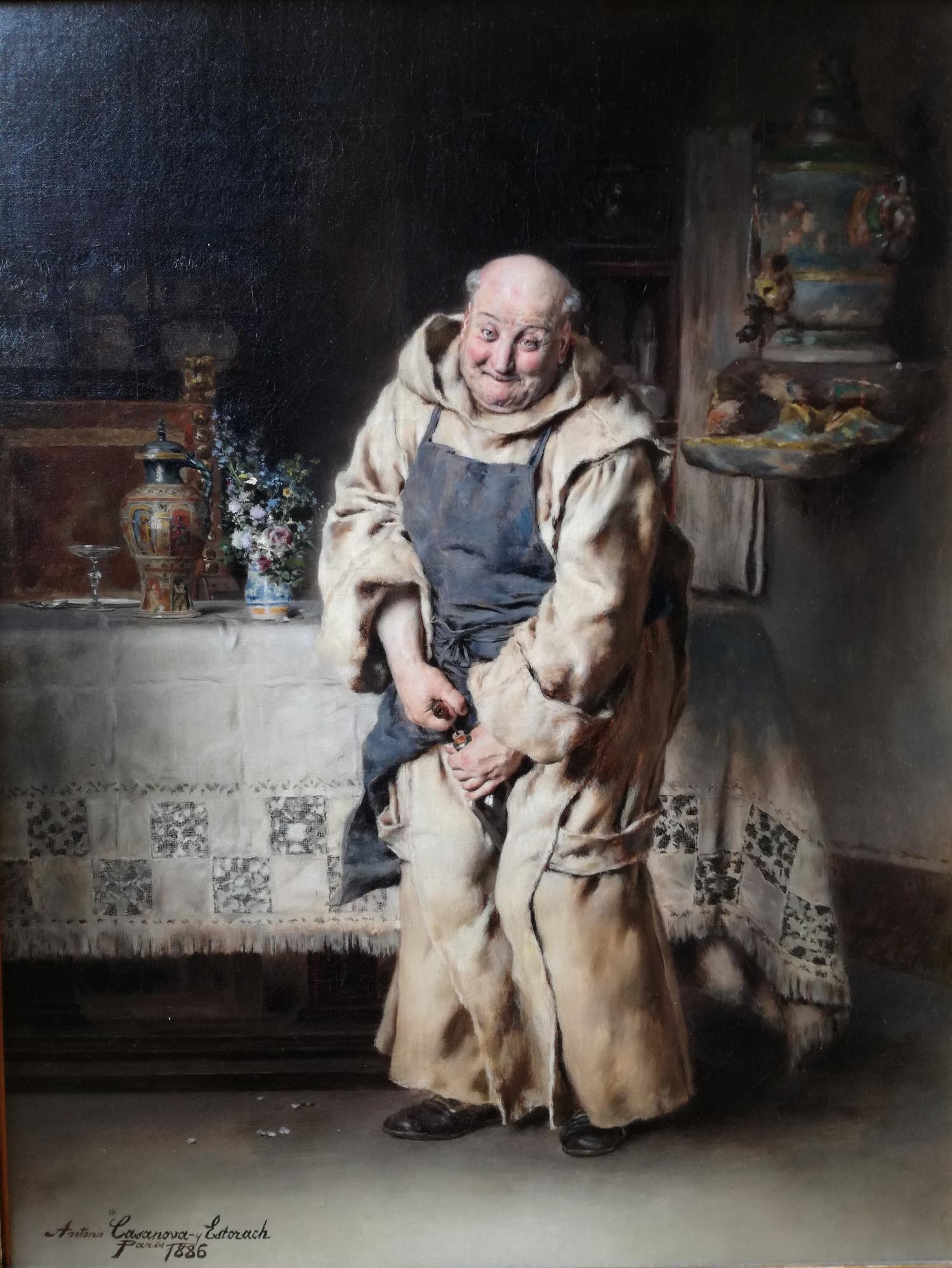
Origins and training
Antoni Casanova was born in Tortosa in 1847, into a very poor family. Moreover, the precarious nature of his childhood years in Tortosa, and later in Barcelona, gave him the necessary drive to tightly grasp his natural talent as the sole means of socioeconomic progress. Casanova took his first steps as an apprentice under the tutelage of the draughtsman and set designer Josep Planella i Coromina. In 1860 the young student became a pupil of the Reial Acadèmia Catalana de Belles Arts de Sant Jordi, initially combining his official studies with the lessons of his first master. The excellent results were soon there for all to see, and caught the eye of the institution’s director, Claudi Lorenzale i Sugrañes, who helped him out with his own money.
From 1864, Casanova continued his training at the Real Academia de Bellas Artes de San Fernando in Madrid, having the chance to copy the universal works in the Museo del Prado on several occasions. A notebook that has survived from the year 1870 bears witness to his graceful use of the pen when imitating the brilliance of the great canvases of the past.
Shortly afterwards, the painter briefly returned to Barcelona for a year. With the canvas The Ransoming of the Captives (RACBA), he won the grant awarded by the Diputació de Barcelona for the purpose of finishing his training in Rome.

The mark made by Rome on his production was captured in a series of creations of varying types. On one hand, the painter kept his apprentice’s promise, which materialized, for example, when he sent the painting The King Ferdinand of Antequera who, sick in Igualada, is assisted by Fivaller to the Diputació de Barcelona. Elsewhere, in a stylistic line similar to that followed by many of his fellow artists in Rome, the artist made several costumista watercolours. These compositions, set principally in the countryside, became truthful and luminous study models. Lastly, in what would be his first major foray into the market, Casanova followed in the footsteps of his admired friend Marià Fortuny, painting small-format genre scenes often set in the previous century. He repeatedly chose festive and sensual scenes, successfully creating with his virtuosity images full of handsome figures wrapped in luxurious robes and sumptuous accessories. The latter are depicted with splendid attention to detail that transports us to a world of pleasure indebted to the style typical of Rococo.
While the painter was in Rome something occurred that shook up the art scene of the day, Marià Fortuny’s untimely death in May 1874. Antoni Casanova Estorach was a witness to the terrible demise and the tragic outcome, remaining cool-headed enough to relay the details of the fateful event to the master Claudi Lorenzale, with a power of description as realistic and meticulous as his paintings. Although this unfortunate event was a terrible shock for the group of artists that had formed around Fortuny, it also created a large commercial vacuum to be filled by them. Nevertheless, in parallel to this death, the end of Rome’s predominance in the international art scene had been heralded for years. The new epicentre was Paris, which definitively consolidated its hegemony.
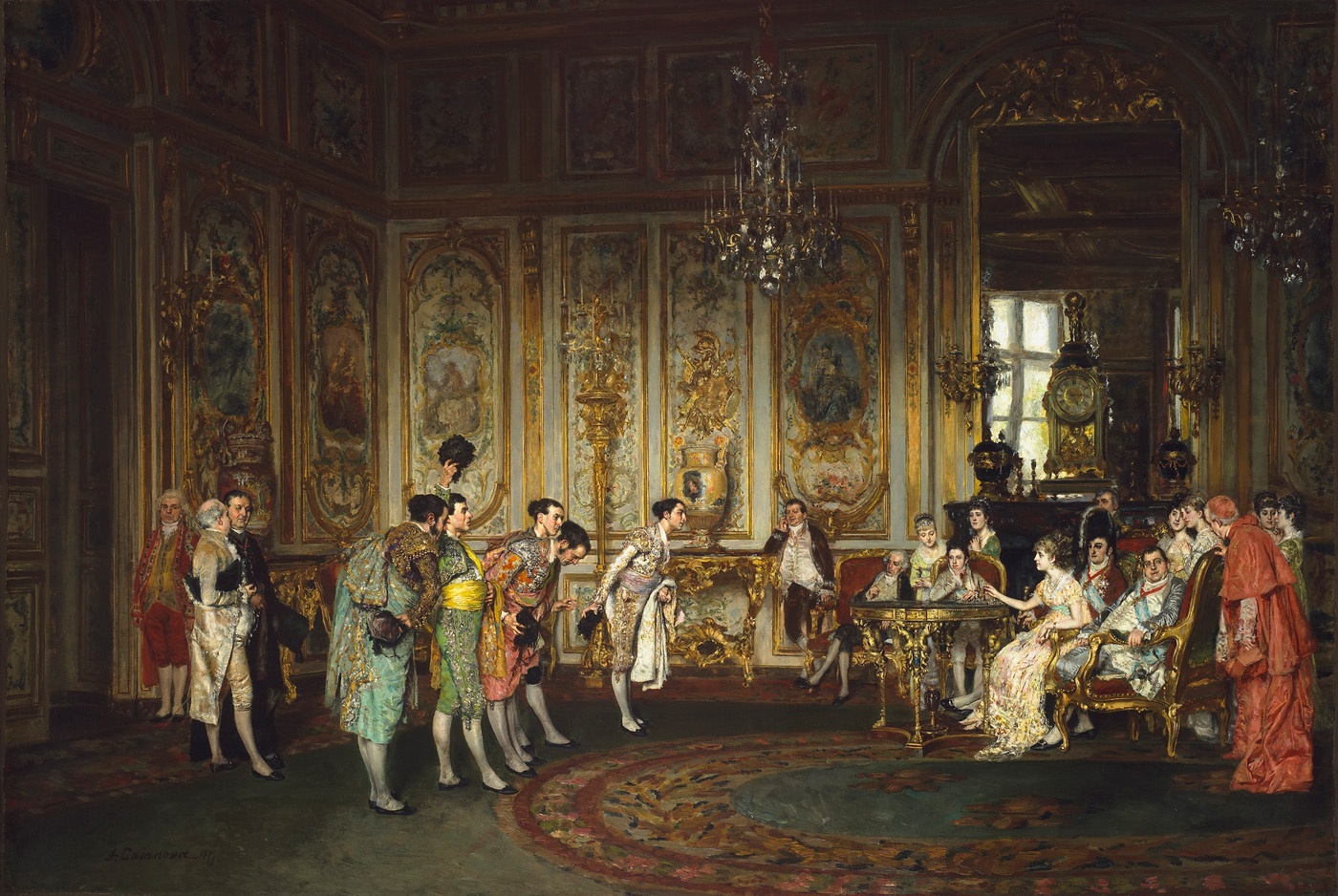
Antoni Casanova Estorach moved to the French capital, where he lived for the rest of his life.
Anticlerical satire
Success took no time in coming and quite soon his genre paintings were enjoying great acceptance. Even so, his most significant triumphs would arrive after a gradual change of direction that led him to specialize in anticlerical satire, and this kind of subject matter became the most iconic element of his output. This biting humorous view shows clergymen enjoying their privileged position, from the innocent gluttony of the bon vivant to the consumption of alcohol and drugs, via scenes of misunderstandings and silliness full of humour and mischief.
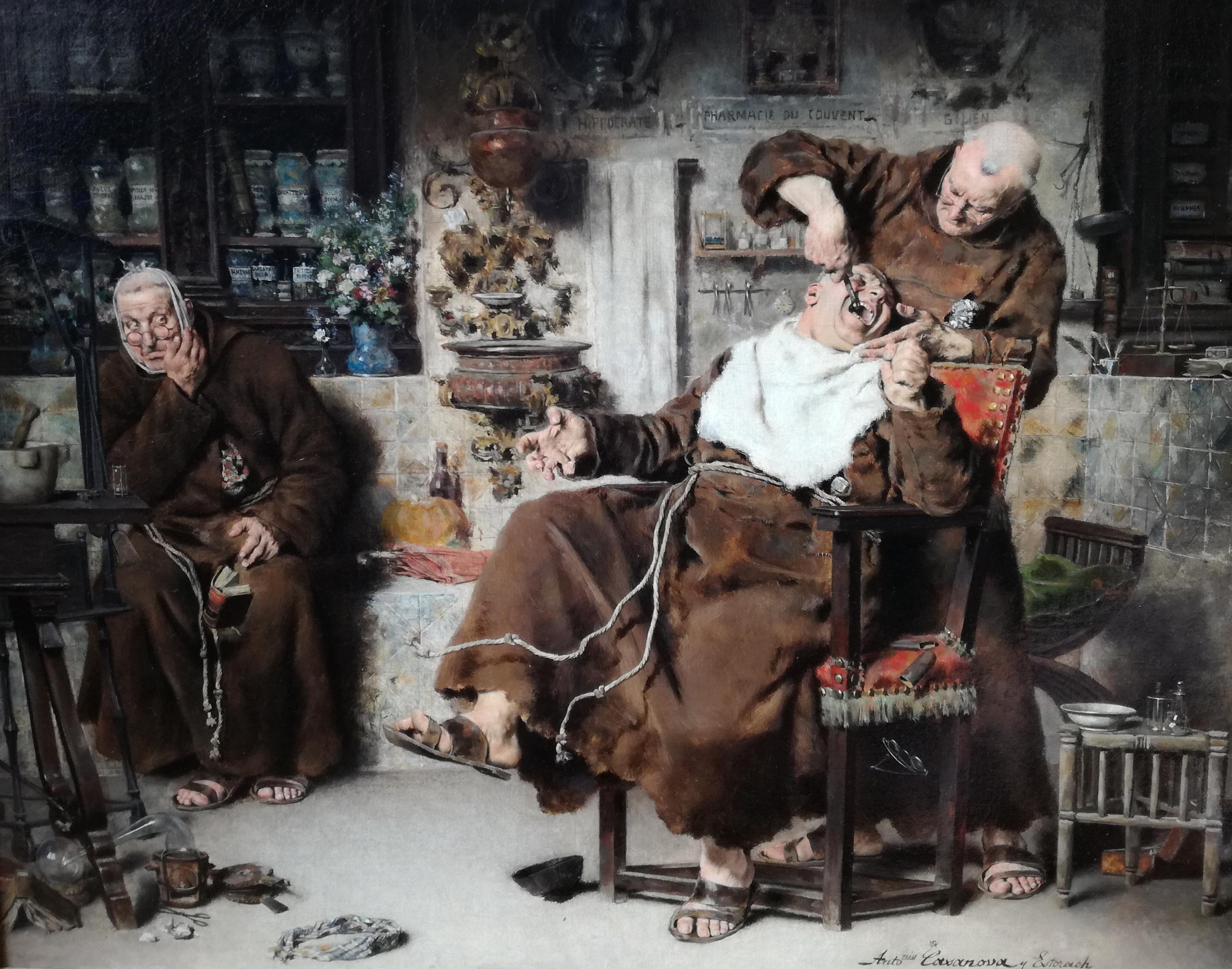
It should be pointed out that Casanova Estorach did not choose anticlerical satire by chance, since it was in keeping with the atmosphere he encountered in Paris. Anticlericalism had been present in society throughout the century, going back to episodes that took place during the French Revolution.
Returning to Antoni Casanova’s professional career, we cannot overlook his importance in the American market. Along with Romà Ribera or Marià Fortuny, he was one of the Catalan artists of his day with the greatest volume of work exported to the United States. The registers of dealers such as Knoedler & Co. reveal an excellent reception of the artist’s productions on the other side of the ocean, particularly some of those most caustically critical of the clergy.
Competitions and acknowledgements
Casanova Estorach achieved a series of notable successes, including the second-class medal of merit obtained by the oil painting, now lost, The Last Days of Philip II in Madrid in 1884, or the second-class medal won thanks to the highly praised canvas Saint Ferdinand, King of Spain in the same city in 1887. There is also the acknowledgement earned at the Universal Exposition in Paris in 1889 with the painting The King Charles V’s Entry into the monastery of Yuste, which was awarded the bronze medal, and is now in the collections of the Museu Nacional d’Art de Catalunya.
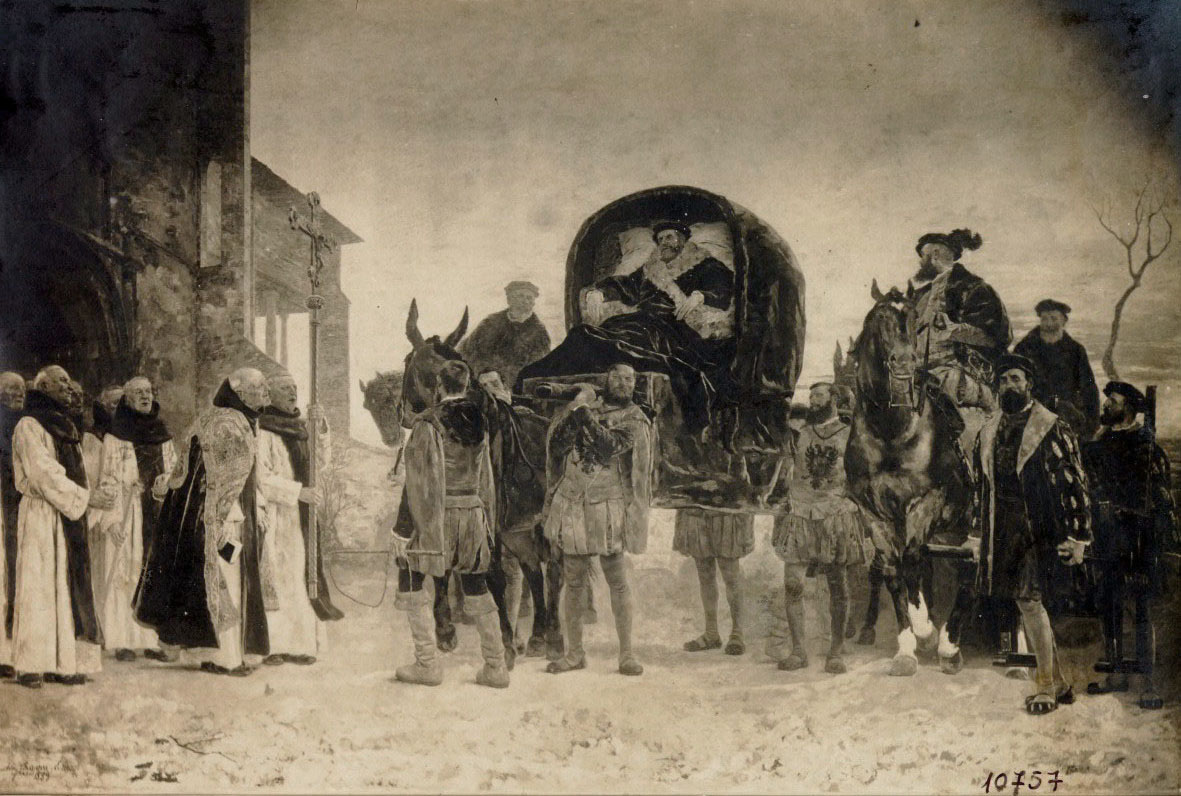
Reviews always mentioned his great talent for portraiture. The main body of the work he did during his life, whether large history paintings or small genre productions, shows us a large catalogue of expressions. It can be claimed that he was one of the most reliable Catalan artists when it came to the different facial expressions. Apart from that, his sureness allowed him to consider and successfully accomplish complicated foreshortenings, always with a proactive attitude that never shied away from pictorial problems. Moreover, much of the artist’s talent rested on an excellent ability to draw: meticulous and detailed, but at the same time vivacious and eloquent, virtues thanks to which he was able to steer clear of affectation. It is necessary, then, to separately make a case for his graphic output, with its wide range of types, including pen and ink, watercolours, etchings, tracings, preparatory sketches, and so on.
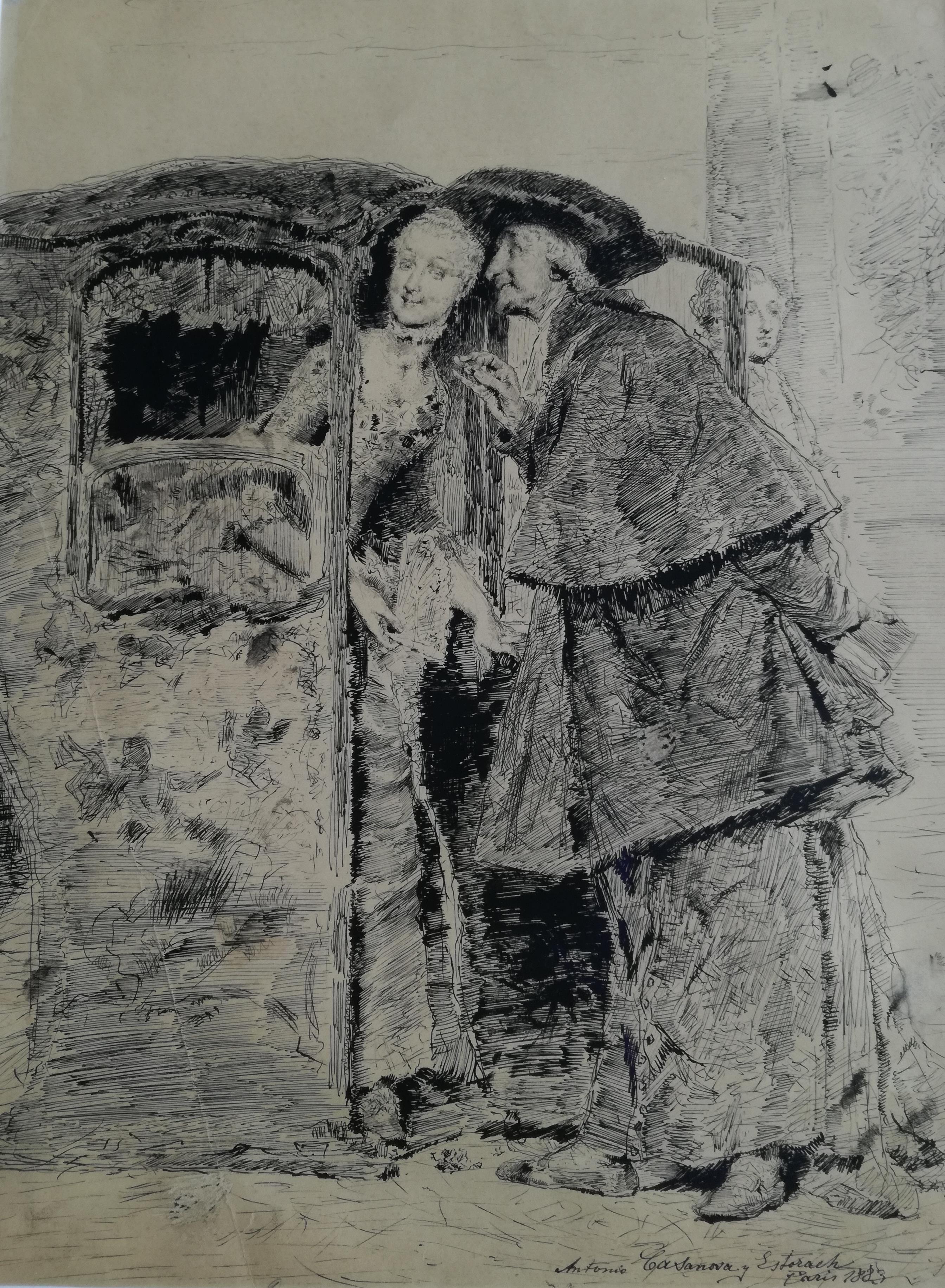
Antoni Casanova Estorach’s drive as an artist led him to excel professionally, leaving for posterity marvellous works in both the gesture and the execution.
Unfortunately, his own self-discipline, and his fervent belief in the need to scale the artistic heights of Olympus with no thought for the cost to be paid isolated him personally, and his circle of friends was as select as it was small. His life could only be understood on the basis of art and the unflinching desire for professional success, which made him almost incapable of enjoying the pleasures of the City of Light due to his elusive, shy and depressive nature. This problem got worse just when the artist was at the peak of his success. He was the victim of a substantial robbery that plunged him into the depths of melancholy and despair from which he was unable to leave. Contrary to the joy of the monks that he had so avidly depicted throughout his life, the painter was, even long before this theft, an unsociable and obsessive man, capable of shutting himself up unhealthily in his workshop for weeks on end with just one thing on his mind, his art. The serious crime was a fatal blow, not so much because of the financial loss but for the despondency that settled in the artist’s already unstable soul: he died in the darkness of his studio on 22nd December 1896. Despite the difficulties with experiencing joy in all its fullness during his life, the painter depicted it masterfully thanks to his talent, this being the cruel paradox that defines both his figure and his art.
This talented artist from Tortosa, who conquered Paris, bequeathed to us the legacy of his paintbrush, as virtuoso as it was irreverent.







